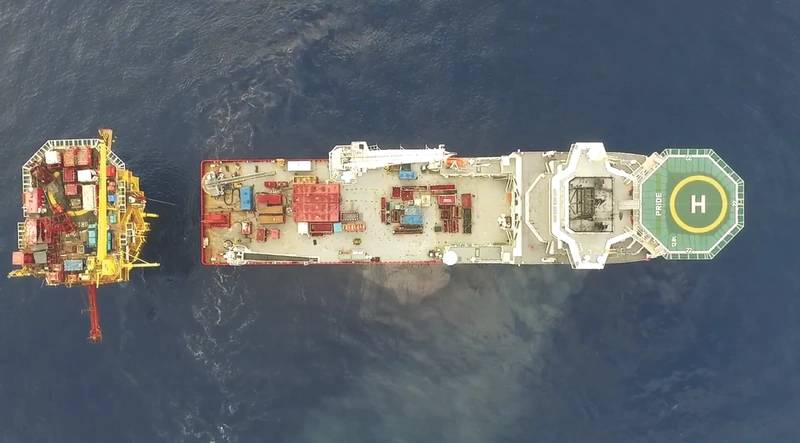
In a bid to maintain production rates but with less outlay, operators have been looking closer to home. Reducing costs and increasing efficiency have been high on the agenda. Should well intervention be higher?
Well intervention, which can help increase production or restore shut-in wells, might seem like a sensible option in a lower oil price and profit environment. But are operators doing as much as they could?
Restoring shut-in wells can add production at economic rates, Margaret Copland, senior wells and technical manager at the Oil & Gas Authority (OGA) told the Offshore Well Intervention Europe (OWIE) conference in Aberdeen earlier this year.
There have been 7,000 wells drilled on the UK continental shelf (UKCS). Some 2,700 of those are deemed active, and of that number about 600 were shut-in, according to the OGA’s 2018 Wells Insight report. About 32% of the total are subsea wells.
According to the OGA’s data, 22 million barrels of oil equivalent (boe) of production was added in 2017, through intervention operations, at an average well restoration of just $6.4/boe. “That’s an amazing rate of return,” Copland says. Yet, subsea well intervention was carried out on just 14% of wells in 2017, she said, compared with 54% of platform wells. “Given that 30% of wells are sitting shut-in – that’s not wells that are in cessation of production (COP), it’s 30% of the active well stock – there is something wrong with a 14% intervention rate. We should be at 30%, trying to get these shut-in wells online, assuming facilities can handle it (e.g. water handling, etc.).”
 Margaret Copland, senior wells and technical manager at the Oil & Gas Authority (Photo: : Oil & Gas Authority)
Margaret Copland, senior wells and technical manager at the Oil & Gas Authority (Photo: : Oil & Gas Authority)
Subsea challenge
Cost could be a challenge. Subsea well intervention cost 54% of the total well intervention spend on the UKCS in 2017, according to the Wells Insight report. Another issue is lack of data about what is actually happening in wells, i.e. a lack of well surveillance. The rate of well surveillance work was just 8% of the active well stock in 2017 – and that rate is significantly less for subsea wells – despite a large prize that could be had by doing well intervention, Copland said.
Garry Fines, regional manager, at Baker Hughes, a GE company, agrees, saying that there is a “data gap”. “That makes the task harder, finding out which wells to intervene on,” he says. “By increasing surveillance and intervention rates, you increase opportunity to unlock these reserves.”
Fines says that the number of shut-in wells is an opportunity, as is doing things differently. That may come, thanks to a change of the guard in the UK North Sea. Between 2014-2018, there’s been a 23% change in ownership. “That’s driven change,” he says. Many of the new companies in the basin are independents and quite often private equity backed, which suggests a different finance dynamic – i.e. a push for faster payback on investment. “For me, intervention is a lower cost opportunity than drilling a new well. I’m a bit baffled why intervention isn’t higher up the pecking order in what we can do,” he says.
According to Fines, demand for well intervention in the North Sea – across Norway and the UK – totals about 1,000 days per year, with 726 of those days based on rig utilization (e.g. platform based) and the rest from light well intervention (LWI) vessels. In the UK, intervention activity is led by riserless LWI vessels (RLWI) in a more spot market type environment. In Norway, Equinor drives the agenda with long-term contracts for RLWI vessels. This work will increase as subsea tree installations increase, by about 200 by 2022, suggesting 6.2 intervention systems are needed in the market by that year, compared with 3.9 last year, Fines says.
Operating models
Offering a dedicated vessel that offers full contingencies and even dive support capability, should be an attractive model for operators, says Helix Energy Solutions, which has the most intervention vessels and longest track record, and is soon bringing its newbuild the Q7000 semisubmersible to the market. The firm also has LWI vessels with saturation diving capability that can help to de-risk operations, by performing well surveillance and doing simultaneous diving operations, says Neil Grieg, Deputy Project Manager, at Helix Well Ops, part of Helix Energy Solutions. These capabilities can help reduce subsea well plugging and abandonment costs by doing more of the work that rigs would do, he says.
TIOS, a joint venture between TechnipFMC and Island Offshore Subsea, which uses vessels managed by Island Offshore and services from Atlas Intervention, also says a dedicated service is more efficient. Yet, TIOS’ Andrea Sbordone says, while cost is related to efficiency, often projects are evaluated based on spread rates – wrongly.
Fines suggests there’s an opportunity to offer outcome-based contracts, i.e. a fee based on increased production rates, or deferred payment terms. He also suggests using vessels of opportunity. “Use vessels already on hire with lightweight modular intervention systems,” he says. “There’s a myriad of things we could do, without spending too much capital. I think market is under supplied, there are shut in wells we can exploit. The operator segment and ownership critical point could drive industry to more light well focused approach.”\
 Well intervention operations offshore Malaysia (Photo: Malaysia Petroleum Management)
Well intervention operations offshore Malaysia (Photo: Malaysia Petroleum Management)
Looking overseas
In Malaysia, a campaign to increase well intervention rates has been paying off. In 2013, with declining production rates and 50% of the country’s well inventory idle, Malaysia Petroleum Management (MPM), part of Petronas, decided to take charge. Following some success, the oil price collapse in 2014 called for a new strategy, Shahril Mokhtar, head of completions at MPM, told OWI. Costs had been too high and the success rates too low, at 65%. The new strategy, Integrated Idle Wells Restoration (IIWR), launched under the nationwide Cost Reduction Alliance (CORAL 2.0) program, set out to reduce those costs and increase the success rate.
By 2018, 10 operators were involved and 13 projects run, including Malaysia’s first subsea well intervention and its first subsea well decommissioning operations. The subsea well intervention work on one three-well project was done at $12 million under budget (final cost $8 million) with a 100% success rate, says Mokhtar. New technologies for the region have as also been deployed, including perforate, wash and cement (PWC), cement packers and Ampelmann walk-to-work systems. In total, 22 projects have been run and 75% more production has been achieved under the project, which closed out earlier this year.
A large part of the success was based on using an integrated model, promoting collaboration and risk sharing, he says, while cost savings were made by just using the right operating model, i.e. using the right conveyance method (coiled tubing or wireline, etc.) and selecting the right equipment for the job, Mokhtar said.
The key was a “whole industry approach,” says Mokhtar. “To get this whole industry approach was not easy,” he says. “It meant getting operators and service companies to work together and then aggressively sharing the learnings, raising awareness and training.”